- Raspberry Pi 4: Amazon
- Raspberry Pi 3 A+ and B+: Pi
- Raspberry Pi 400: Amazon
- Raspberry Pi CM4: AliExpress
- Raspberry Pi Pico: Pi
- Raspberry Pi Zero 2 W: Pi
- Raspberry Pi Zero: Amazon
- Raspberry Pi Compute Module 3+: Pi
There are a lot of single-board computers out there, aimed at makers, hobbyists and education. From tiny Arduinos to NVIDIA’s AI Jetsons, they can be used for almost anything you can think of. There’s one brand that stands out, though: Raspberry Pi.
Inspired by the 1980s 8-bit computers that turned a generation of Britons into developers, the Raspberry Pi Foundation was set up to deliver a low-cost computer that could do the same for today’s schoolkids. Their first device, the Raspberry Pi Model B, was launched in 2012, with 256MB of memory and a 26-pin GPIO expansion port. Over the next decade the original ARM-based device has grown into a family of devices, including a full-blown computer, a microcontroller CPU, and a series of modules that can be used to build more complex devices.
Most Raspberry Pis use a microSD card for storage. This can be slow, with a risk of hitting flash write cycles on particularly heavy workloads. More recent devices will boot from USB-connected SSDs, with third-party cases with M.2 module supports available. The option of using cheap microSD cards remains popular in schools, where students can be issued with a memory card for their programs and data, sharing the more expensive single-board computers between classes.
It’s now gained its own OS, a Debian-based 32-bit Linux, Raspberry Pi OS. Recently upgraded to the Bullseye release, it comes bundled with coding tools and the familiar LibreOffice productivity suite. As there’s no 32-bit ARM build of Chrome, the main browser is the open source Chromium release. Most extensions will work on a Pi, though some key Chrome features, like history and bookmark sync, aren’t supported.
A standard 40-pin GPIO port has allowed an ecosystem of HATs, Hardware Attached on Top boards, to develop. These allow you to quickly add new features to your device, including support for Power Over Ethernet connections for remote devices. Other hardware support includes a common camera connection, with several camera modules currently available, including a 12-megapixel device that works with S-mount lenses. If you want to use a board with a directly connected display, you have the option of using a GPIO-connected display via the device’s I2C ports or a module using the built-in display connector. Many Raspberry Pi displays support touch, allowing you to use them to support UIs for IOT projects.
Recent developments have included its own silicon, the RP2040, at the heart of the Raspberry Pi Pico board, as well as custom hardware from many maker vendors. That’s been followed by a new silicon package design, squeezing Raspberry Pi 3 hardware into a new version of the tiny low-cost Raspberry Pi Zero.
So which Raspberry Pi is right for you? We round up the whole family.
Raspberry Pi 4
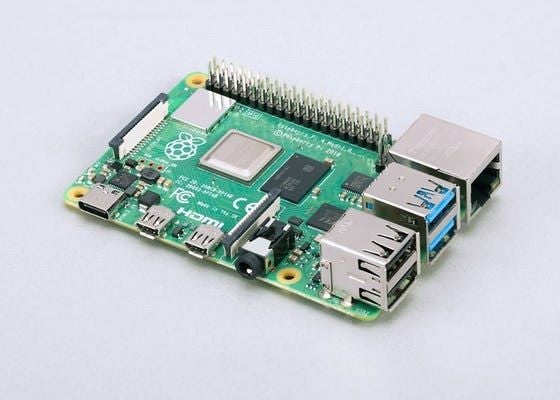
Image: Raspberry Pi
Launched in 2019, the Raspberry Pi 4 remains the company’s flagship. Built around the BCM2711 microcontroller, it comes in four versions. These have 1GB, 2GB, 4GB, and 8GB of RAM, respectively, with gigabit Ethernet, USB 3, and dual micro-HDMI ports. Recent releases have a new CPU revision, which allows it to run faster and cooler, so you don’t need a processor fan for most loads.
If you’re buying a Pi today, the Raspberry Pi 4 is likely to be your first choice. It has plenty of connectivity, with wireless and wired connections, and with an 8GB option, enough memory to power a 64-bit desktop Linux like Ubuntu as an alternative to its own Raspberry Pi OS. The familiar 40-pin GPIO plug works with a wide selection of HATs, including plug-in displays and the popular AstroPi educational maker board.
Raspberry Pi’s official case, mouse and keyboard let you quickly turn your Pi 4 into a desktop Linux PC, though you may prefer to use a third-party case with a built-in fan and support for SSD hard drives.
The Raspberry Pi 4 ranges in price from $35-$75.
Raspberry Pi 3 A+ and B+

Image: Raspberry Pi
The venerable Raspberry Pi 3 remains a force to be reckoned with, providing a surprising amount of bang for your buck, even after all these years. If your budget doesn’t stretch to the Pi 4, then the Pi 3 B+’s 1GB of RAM and its single full-size HDMI port should work well enough for you. Four USB ports, Ethernet and Wi-Fi work alongside the standard 40-pin GPIO port to give you plenty of connectivity. If you’re building a sensor array that needs a lot of local compute, the Pi 3 is still worth a look.
However, if you don’t need Ethernet, the new Raspberry Pi Zero 2 with the same processor, for $20 less, is probably a better choice. As a result, you should expect to see the Pi 3 join the list of legacy industrial-only hardware in the next year.
The Raspberry Pi 3 A+ is $25, and the Raspberry Pi 3 B+ is $35.
Raspberry Pi 400

Image: Raspberry Pi
While the Raspberry Pi 4 was the first Pi that could really run a Linux desktop, the Raspberry Pi 400 went a step further and became the first true home computer from the organization. Based on the familiar Raspberry Pi keyboard, the Raspberry Pi 400 uses a new circuit board to embed a variant of the 4GB Pi 4. With most of the same ports as a Pi 4, it’s easy to use the Raspberry Pi 400 as a development PC or to run most of the tools you’ll find on a Linux desktop—and with popular distributions like Ubuntu available, it makes an effective alternative to a Chromebook without resorting to locked down hardware.
As they use a recent version of the Raspberry Pi 4 firmware, all Pi 400s can boot from SSD drives over USB. That comes in handy when using them as educational computers, when all you need is a monitor and USB mouse to quickly kit out a small classroom. With budgets constrained, delivering a full desktop experience for around $200 is a good deal, especially when the software it runs is the same as you’ll find on any Linux PC.
The Raspberry Pi 400 sells from $70.
Raspberry Pi CM4

Image: Raspberry Pi
Not all projects need a full-size Raspberry Pi 4, especially if you’re building hardware for resale or designing compact systems for deployment on the edge of the network. Raspberry Pi’s compute modules are designed to be at the heart of custom hardware, with standard socket connections to deliver the full suite of Raspberry Pi connectivity.
The CM4 is the latest compute module, building on the Raspberry Pi 4, using the same processor and memory options. Built-in eMMC storage options means there are 32 variants of the CM4, including several that remove the wireless connectivity features. A standard board pin-out makes designing hardware easy, and Raspberry Pi and partners make a series of development boards.
One big change between the Raspberry CM4 and the Pi 4 is the removal of the USB 3.0 ports. Instead they’re replaced with a PCIe interface, suitable for use with storage, networking or even graphics cards. Compute Modules are ideal for compact edge hardware and can be used to build small Kubernetes clusters.
The Raspberry Pi CM4 sells for $25-$90.
Raspberry Pi Pico
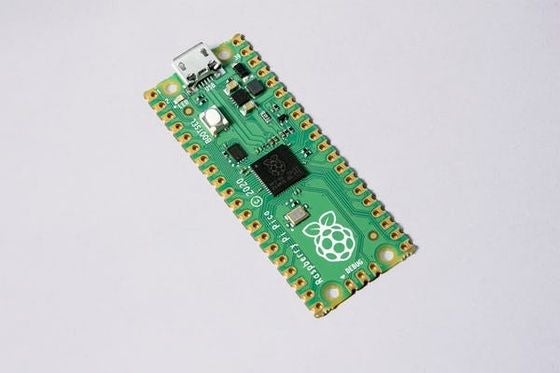
Image: Raspberry Pi
The RP2040 is Raspberry Pi’s first silicon, a microcontroller-class device based on the ARM Cortex M0 core design. Two cores and 264KB of RAM give it most of what you need to build all kinds of projects, and the Raspberry Pi Pico adds 2GMB of flash storage. 26 GPIO pins connect your code to the world, with programs loaded over the same USB port that powers your device. An on-board temperature sensor helps you get started.
You can write code in C++ or MicroPython, making it ideal for both experts and beginners. Code loads over USB and runs as soon as you restart your device. A partnership with Microsoft ensures that plug-ins and tooling are ready for use with the free cross-platform Visual Studio Code development tool.
The Raspberry Pi Pico is perhaps best thought of as Raspberry Pi’s Arduino equivalent. It’s designed to become the heart of hardware projects, with a board that can solder into other hardware. The RP2040 is being used by third-party vendors to drive custom keyboards and programmable lighting among other hardware projects.
The Raspberry Pi Pico sells for $4.
Raspberry Pi Zero 2 W
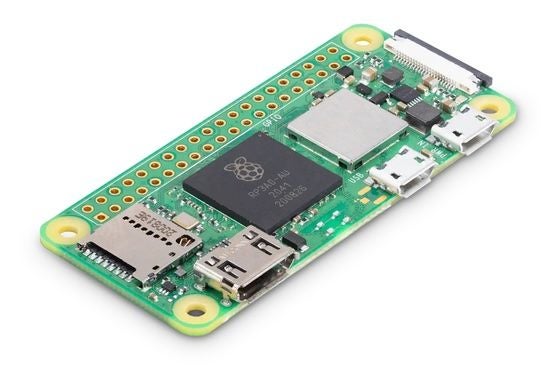
Image: Raspberry Pi
The Raspberry Pi Zero 2 W is the latest member of the Pi family, and a new edition of the tiny Raspberry Pi Zero. A $15 device, it takes a familiar design and supercharges it with the same processor as the Raspberry Pi 3. Projects that used to need a full-size Pi can now be built in less than half the space, with enough power to run a desktop environment. Your only limit is memory, with 512MB of RAM.
You’ll need to solder on a header to use the GPIO port, but that doesn’t require too much soldering skill and there are solderless third-party options. Other ports include a USB power port, a USB-OTG connector, a standard CSI-2 camera port, and a micro-HDMI port. They’re all in the same place as on the previous Raspberry Pi Zero releases, so you won’t need to invest in new cases or power supplies.
The Raspberry Pi Zero 2 W is available for $15.
Raspberry Pi Zero
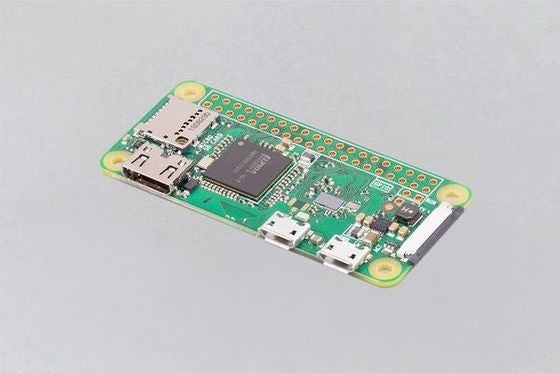
Image: Raspberry Pi
Designed to deliver an entry-level Pi experience, the Raspberry Pi Zero took the basic Pi software and hardware and built it into a small form factor board. While memory is limited, it’s an effective low power system suitable for many projects. The basic Raspberry Pi Zero has no connectivity, only a set of USB ports. You will need to add your own header for the GPIO ports.
A second version, the Raspberry Pi Zero W, added wireless connectivity for an extra $5. This was followed by the WH version, which added a pre-soldered GPIO header for use with HATs. The Raspberry Pi Zero WH is probably your best choice for a low-cost PI currently, as it’s suitable for most projects and needs very little work to set up.
The Raspberry Pi Zero is available from $5-$15.
Raspberry Pi Compute Module 3+
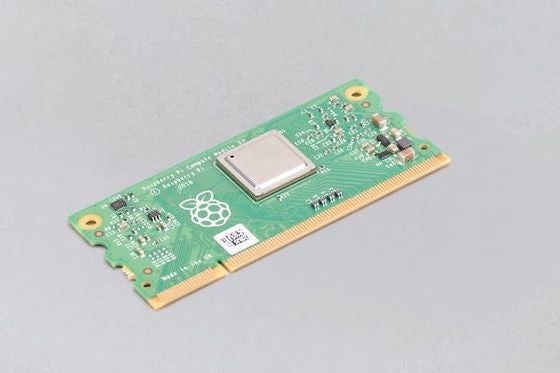
Image: Raspberry Pi
Raspberry Pi’s compute modules turn the familiar Pi into pluggable boards. The Raspberry Pi Compute Module 3+ is based on the familiar Pi 3+ and uses the same processor and has the same connectivity options, all accessed via a single edge connector. Plug it into a suitable carrier board and you can take Raspberry Pi 3 code and run it on custom hardware. Popular options include carrier boards for network attached storage and the Turing Pi high-density compute systems.
The Raspberry Pi Compute Module 3+ is available for $25-$40.
Legacy Raspberry Pis
While the original Raspberry Pi and Raspberry Pi 2 (and the early models of the Raspberry Pi 3) are still in production, they’re not recommended for most users. Instead, those that come out of the factory are intended for products that are built around Raspberry Pi’s hardware, and if you need to buy them, you’ll need to go to electronic component vendors. Production for these will end sometime after January 2026.
Our recommendations for which Raspberry Pi to buy
- For education: The Raspberry Pi 400 is a low-cost and capable desktop Linux computer. Add a mouse, a USB SSD and a screen… it’s a 21st century ZX Spectrum!
- For hobbyists: The various Raspberry Pi 4s are a powerful and capable development system for all your maker projects. Choose the 4GB or 8GB versions.
- For business: The Raspberry CM4 is an easy way to build embedded computer hardware, with pre-certified modules that drop into your own circuit boards.
- For the beginner: The Raspberry Pi Zero 2 W is a $15 computer that does everything you want.